You are here
Objective 1. Secure the supply of blood and blood products
It is the responsibility of the NBA to manage the national blood supply to ensure that healthcare providers have sustainable, reliable and efficient access to blood and blood products needed for patient care. The NBA ensures blood supply security by working with States and Territories to determine and manage an annual supply plan and budget and negotiating and managing blood supply contracts and arrangements with local and overseas suppliers.
National Supply Plan and Budget
A key element of the NBA's role in ensuring security of supply is to develop, coordinate and monitor the annual National Supply Plan and Budget (NSP&B), including obtaining annual approval from Health Ministers.
This is achieved by:
- developing a national estimate of product demand
- liaising with States and Territories to refine the estimated demand for products
- collecting and distributing data on product issued and reporting variations to jurisdictions on the approved supply plan
- intensively managing products if they are in short supply.
Performance against the 2017-18 NSP&B
Throughout 2017-18, products were supplied to meet clinical demand and supply risks were effectively managed. The approved budget for 2017-18 covering the supply and management of blood and blood products and services under contract was $1,212.07 million, comprising $643.63 million for fresh blood products and plasma collection (see Fresh blood products on p.31) and $548.82 million for plasma and recombinant products (see Plasma and recombinant products on p.34). There is $19.62 million included for items such as support for the publication of PBM Guidelines, maintenance of the Australian Haemophilia Centre Directors' Organisation (AHCDO), administration of the Australian Bleeding Disorders Registry (ABDR) and operations of the NBA. Table 2.1 identifies the NBA's expenditure for the supply of products in each product category by supplier in 2017-18 and prior years.
TABLE 2.1 Blood and blood products purchased, by supplier, 2013-14 to 2017-18.
| Supplier | Products Purchased | 2013-14 ($M) | 2014-15 ($M) |
2015-16 ($M) | 2016-17 ($M) | 2017-18 ($M) |
|---|---|---|---|---|---|---|
|
CSL Behring (Australia) Pty Ltd |
Plasma Products
Imported Plasma and Recombinant Products
|
210.10 |
245.19 |
282.49 |
351.83 |
376.61 |
|
Australian Red |
Fresh Blood Products
|
583.13 |
547.10 |
588.40 |
582.40 |
620.69 |
|
Shire Australia Pty Limited1 |
Imported Plasma and Recombinant Products
|
8.25 |
29.11 |
36.62 |
31.45 |
34.25 |
| Imported IVIg |
29.20 |
40.30 | 28.35 | 0.00 | 0.00 | |
|
Bayer Australia Limited |
Imported Plasma and Recombinant Products
|
35.14 |
9.00 |
1.07 |
0.00 |
0.00 |
|
Pfizer Australia Pty Ltd |
Imported Plasma and Recombinant Products
|
93.05 |
54.66 |
56.48 |
56.89 |
49.43 |
|
Novo Nordisk Pharmaceuticals |
Imported Plasma and Recombinant Products
|
27.20 |
32.81 |
36.39 |
24.20 |
35.28 |
|
Bioverativ Australia Pty Ltd |
|
0.00 |
0.00 |
0.00 |
0.00 |
3.68 |
|
Octapharma Pty Ltd |
Imported IVIg |
46.00 |
70.02 |
47.05 |
0.00 |
0.00 |
|
Grifols Australia |
Imported IVIg Diagnostic Reagent Products
|
0.00 0.32 |
0.00 0.41 |
11.58 0.36 |
36.30 0.33 |
44.72 0.37 |
|
Immulab Pty Ltd2 |
Diagnostic Reagent Products
|
0.00 |
0.00 |
0.00 |
0.00 |
3.44 |
|
Ortho-Clinical Diagnostics (Johnson & Johnson Medical Pty Ltd) |
Diagnostic Reagent Products
|
0.43 |
0.44 |
0.43 |
0.44 |
0.71 |
|
Bio-Rad |
Diagnostic Reagent Products
|
0.57 |
0.52 |
0.48 |
0.54 |
0.28 |
|
Abacus ALS Pty Ltd |
Diagnostic Reagent Products
|
0.04 |
0.00 |
0.00 |
0.00 |
0.00 |
|
Total Purchases of Blood and Blood Products |
1,033.43 |
1,029.56 |
1,089.70 |
1,084.40 |
1,169.45 |
|
1With effect from 4 June 2018, the NBA contracts with Baxalta Australia Pty Ltd were novated to Shire Australia Pty Limited. Throughout this report references are made to Shire Australia Pty Limited.
2With effect from 26 April 2018, the NBA contract with Seqirus Pty Ltd was novated to Immulab Pty Ltd. Throughout this report references are made to Immulab Pty Ltd.
Fresh blood products
The list of fresh blood products supplied in 2017-18 is at Appendix 2 Fresh blood components supplied under contract by the Blood Service. The four main products were:
- red blood cells
- platelets
- clinical fresh frozen plasma
- plasma for fractionation.
As demonstrated in Table 2.2, the increase in fresh blood expenditure has progressively moderated over the last ten years primarily as a result of improved efficiencies in Blood Service operations, and in the last six years, a significant reduction in the demand for some fresh blood products due to improved appropriate use and reduced wastage.
TABLE 2.2 Fresh blood expenditure: increases over the last 10 years
|
Year
|
Amount ($M)
|
Growth (%)
|
|---|---|---|
|
2008-09 |
417.2 |
13.0 |
|
2009-10 |
456.1 |
9.3 |
|
2010-11 |
496.6 |
8.9 |
|
2011-12 |
526.3 |
6.0 |
|
2012-13 |
549.3 |
4.4 |
|
2013-14 |
583.1 |
6.2 |
|
2014-15 |
547.1 |
-6.2 |
|
2015-16 |
588.4 |
7.5 |
|
2016-17 |
582.4 |
-1.0 |
|
2017-18 |
620.7 |
6.6 |
|
Total |
5,367.0 |
5.5 (average) |
Fresh blood expenditure in 2017-18 compared to 2016-17 increased by 6.6 per cent. Key factors that have influenced the changes include the following:
- an increase in the quantity of collected plasma for fractionation from 637 tonnes to 675 tonnes
- annual price indexation of 2.95 per cent
- reduction in demand for some fresh products as a result of improved appropriate use and reduced wastage.
During the last five years, the NBA has seen returns to government year on year as highlighted in Figure 2.1. In 2017-18, $48.5 million was returned including $39.7 million for the Blood Service operating surplus and a saving from the decrease in red blood cell demand of 0.9 per cent. This compared to $34.4 million in 2016-17 (which included $22.3 million operating surplus and 1.4 per cent reduction in red blood cell demand).
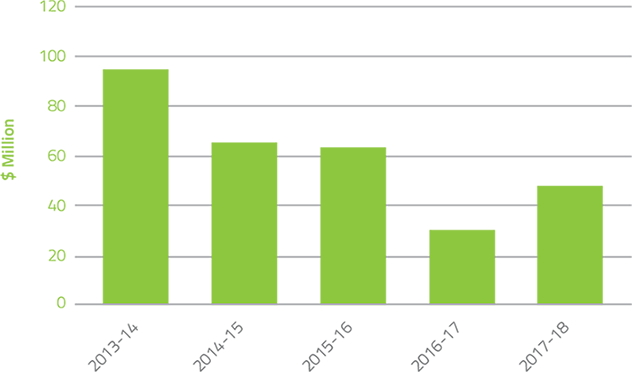
FIGURE 2.1 Returns to Government 2013-14 to 2017-18
Red blood cells
Red blood cells comprise approximately 23.0 per cent of total blood and blood product expenditure and are the largest item of cost in fresh products. Figure 2.2 illustrates that there was a decline in issues of red blood cells (0.9 per cent) compared to 2016-17, with continuation of the steady decline in issues per 1,000 head of population nationally from 30.2 in 2013-14 to 25.5 in 2017-18. In the last five years, demand for red cells has declined by 10 per cent, realising a saving in excess of $85 million. The decline in red cell demand is the result of the ongoing success of programs to improve appropriate use and reduce wastage. These programs encompass a range of health provider and clinical engagement activities, development of best practice guidelines and tools, improved data collection and analysis and improved education and training arrangements. The publication and implementation of the Patient Blood Management Guidelines underpins much of the success in improving appropriate use of fresh blood products.
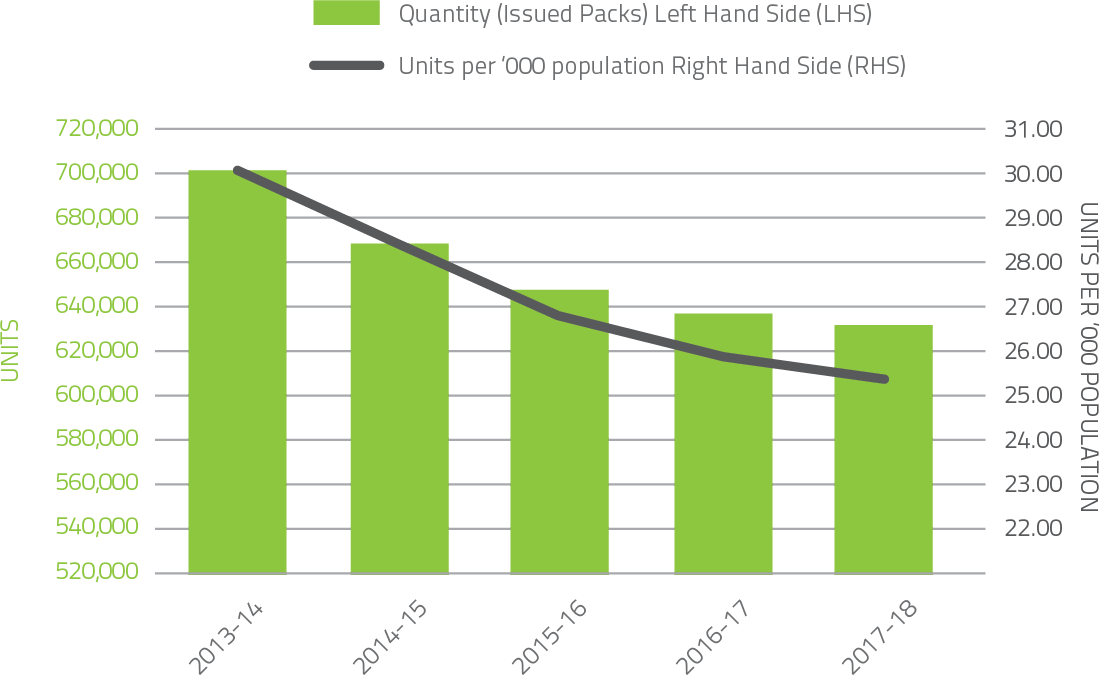
FIGURE 2.2 Red Cells issued by the Blood Service and per '000 population 2013-14 to 2017-18
Platelets
Platelets comprise 4.6 per cent of total blood and blood product expenditure. Figure 2.3 illustrates that there was a 1.9 per cent increase in issues of platelets from 2016-17 and a small change in issues per 1,000 head of population. Platelets are either derived from an apheresis collection or a whole blood collection. In 2017-18, platelets issued were 70 per cent whole blood pooled (64.6 per cent in 2016-17) and 30 per cent apheresis (35.4 per cent in 2016-17).
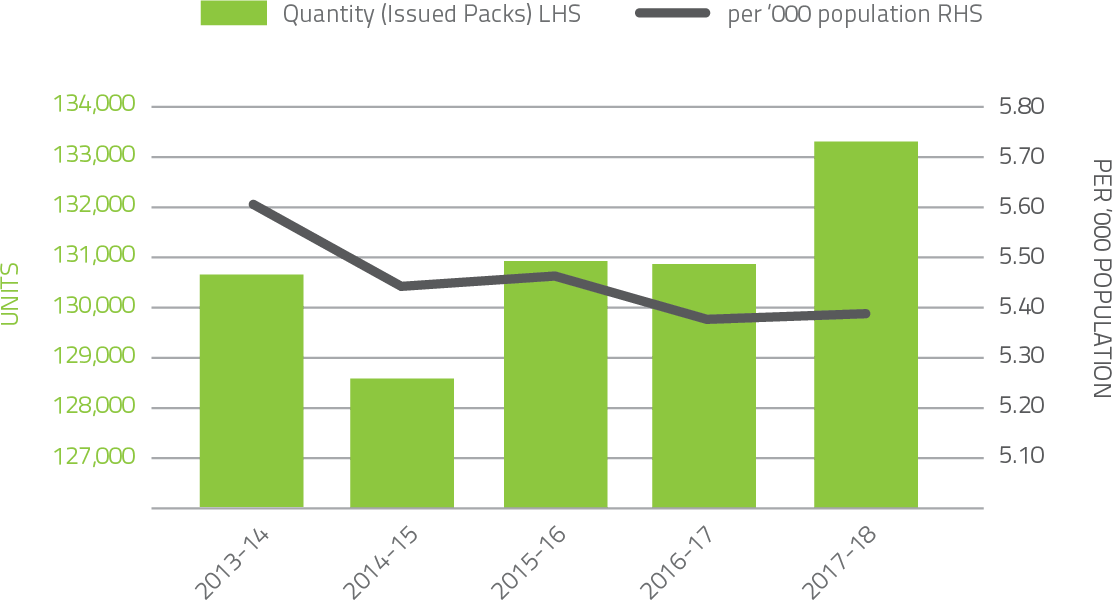
FIGURE 2.3 Platelets issued by the Blood Service and per '000 population 2013-14 to 2017-18
Plasma for fractionation
The Blood Service collects plasma for fractionation to supply to CSL Behring (Australia) Pty Ltd for the manufacture of plasma derived products. In 2017-18, the target for the quantity of plasma to be collected by the Blood Service was 663 tonnes. The growth in plasma collection for 2017-18 exceeded governments' target of 5 per cent per annum by 12 tonnes. The growth in apheresis plasma collection by the Blood Service over the last five years is shown in Figure 2.4 below.
In 2013-14 the ratio of whole blood to apheresis plasma for fractionation was 32:68 and in 2017-18 26:74. This is in part due to the decline in red blood cell demand.
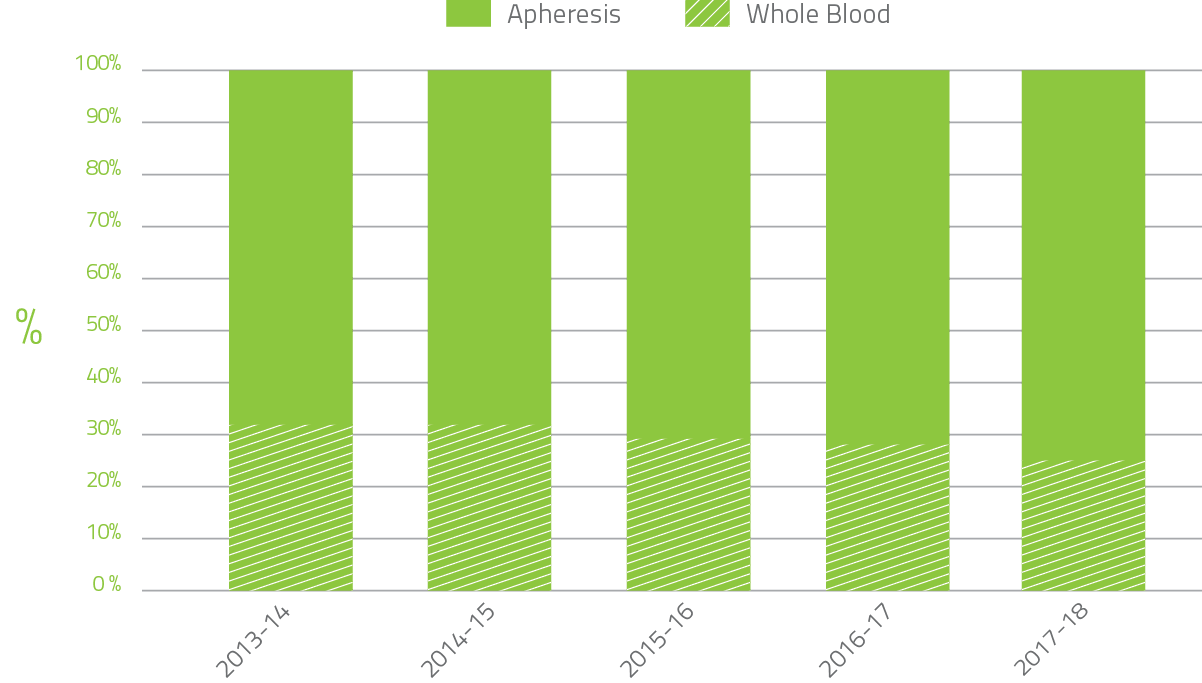
FIGURE 2.4 Whole blood to apheresis plasma for fractionation 2013-14 to 2017-18
Plasma and recombinant products
The cost of plasma derived and recombinant blood products issued under NBA arrangements in 2017-18 totalled $548.3 million, an increase of $43.8 million (8.7 per cent) from 2016-17. Increases in volumes for immunoglobulin (Ig) (10.6 per cent), plasma derived factor VIII (14.1 per cent), and rFVIIa (38.1 per cent) were the dominant factors relating to the growth in expenditure. In addition, the inclusion of C1 Esterase on to the National Product List in October 2016 added $7.06 million to the 2017-18 expenditure. There were cost reductions for some CSL Behring (Australia) Pty Ltd products following the implementation of the National Fractionation Agreement for Australia (NaFAA) Deed.
In the 15 years to 2017-18, expenditure on plasma and recombinant products issued under the national blood arrangements has increased from $205.2 million to $548.3 million. Key drivers of this increase are:
- $389.3 million from increased demand
- $51.8 million to fund recombinant clotting factor products (rFVIII and rFIX).
The combined effect of demand and price drivers on expenditure can be seen in Figure 2.5.
It is of note that significant improvements in price have driven a large increase in savings.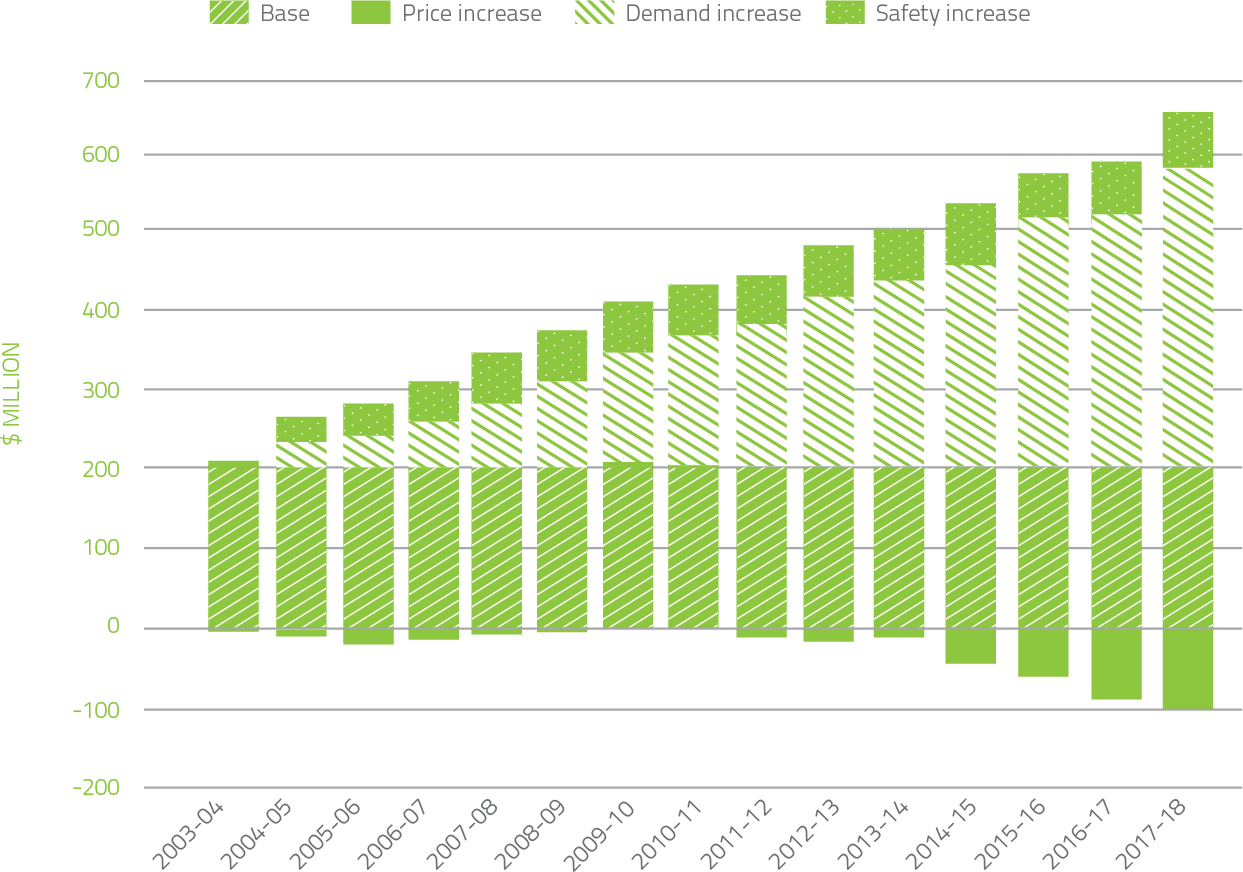
FIGURE 2.5 Plasma derived and overseas product expenditure: cumulative increases on 2003-04 base year
Issues of clotting factors
In 2017-18, clotting factors comprised 12.3 per cent of total blood and blood product expenditure.
Figure 2.6 indicates that the demand for Factor VIII products increased by 5.4 per cent when compared to 2016-17. The demand for recombinant Factor VIII increased by 4.2 per cent over 2016-17.
Plasma derived Factor VIII demand increased by 14.1 per cent.Patient participation in company clinical trials for recombinant Factor VIII products continues to contribute to the variability of year-to-year product growth.
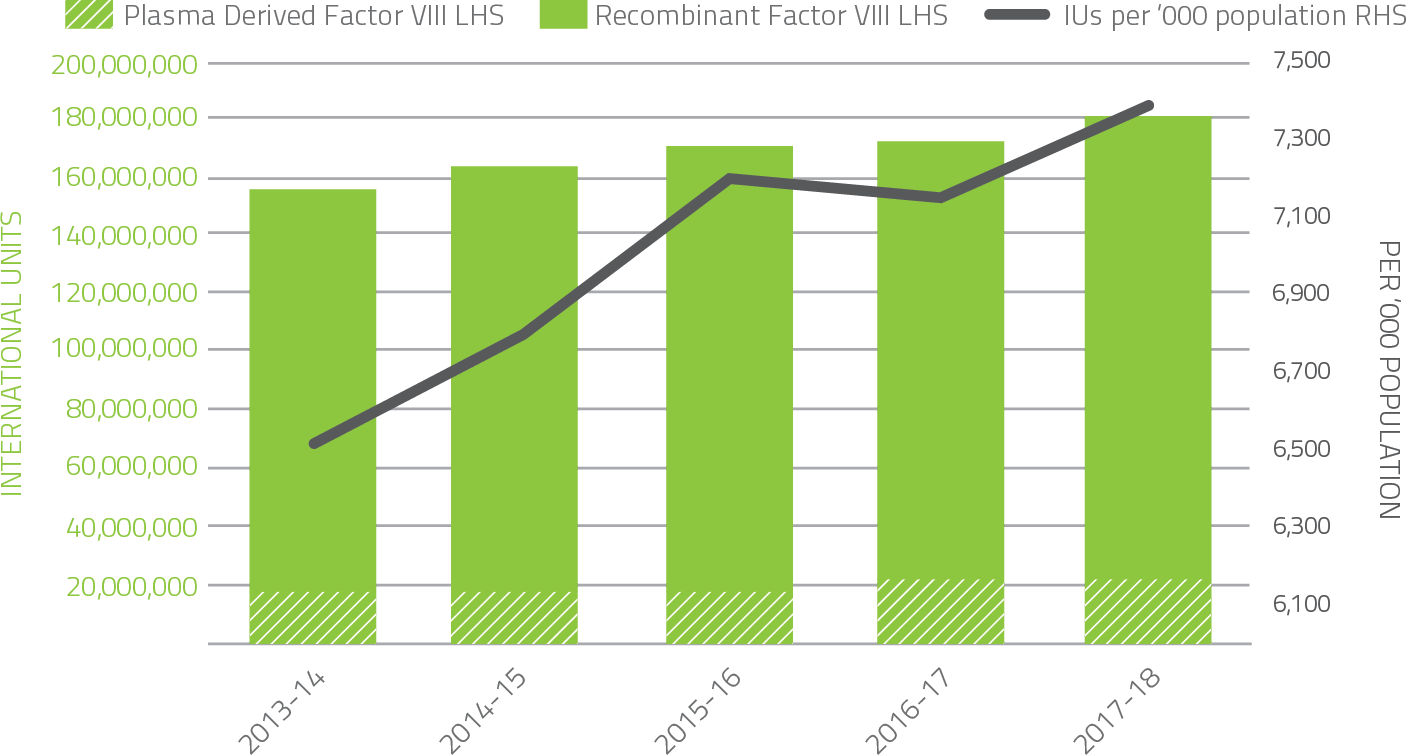
FIGURE 2.6 Issues of Factor VIII products 2013-14 to 2017-18 per '000 population
Figure 2.7 indicates that demand for Factor IX products in 2017-18 increased by 10.8 per cent compared to 2016-17. Plasma derived Factor IX demand decreased by 14.1 per cent in 2017-18 due to a reduction in specific patient requirements. Demand for Recombinant Factor IX increased by 11.4 per cent in 2017-18.
Patient participation in company clinical trials for recombinant Factor IX products continues to contribute to the variability of year-to-year product growth.
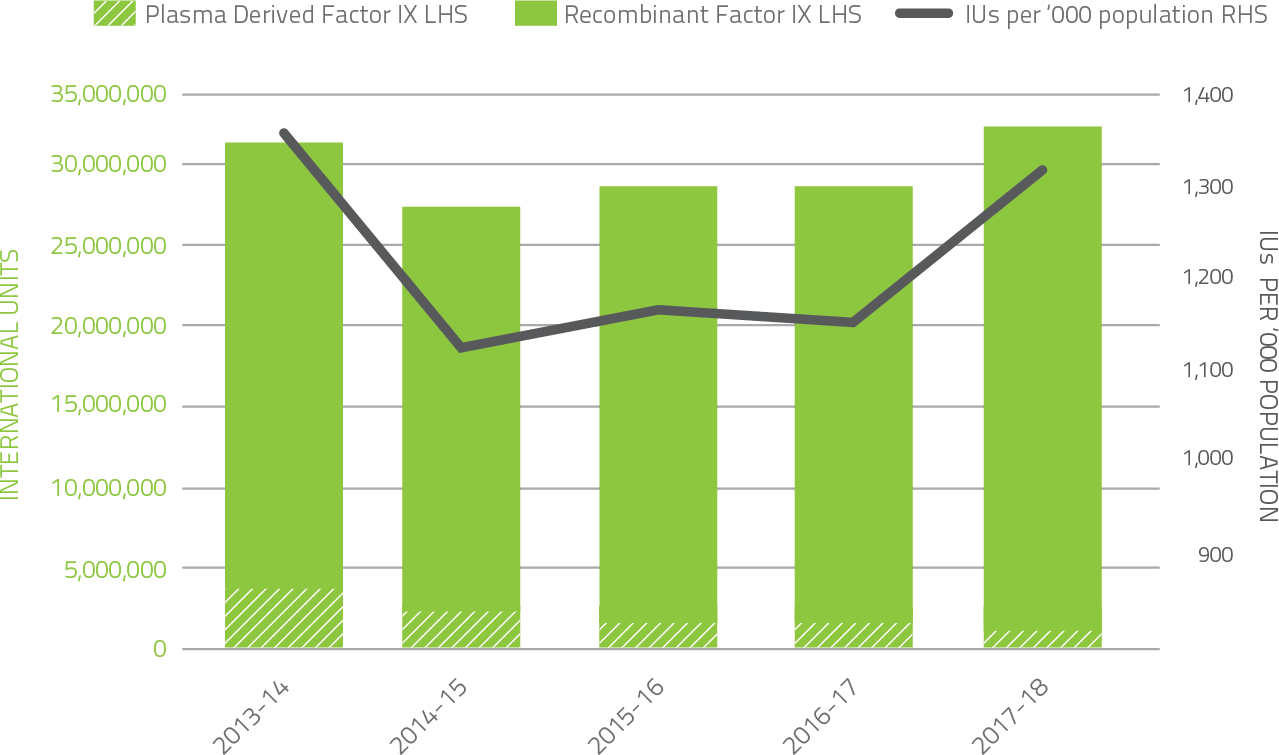
FIGURE 2.7 Issues of Factor IX products 2013-14 to 2017-18 per '000 population
The 2017-18 level of demand for Recombinant Factor VIIa increased by 38.1 per cent and 20.6 per cent for Factor VIII Anti-Inhibitor (FEIBA) compared to 2016-17. Demand for Recombinant Factor VIIa and FEIBA can change significantly from year to year as a result of the variable needs of a small number of patients.
These products have also been variable due to ongoing clinical trials in the clotting factor space.
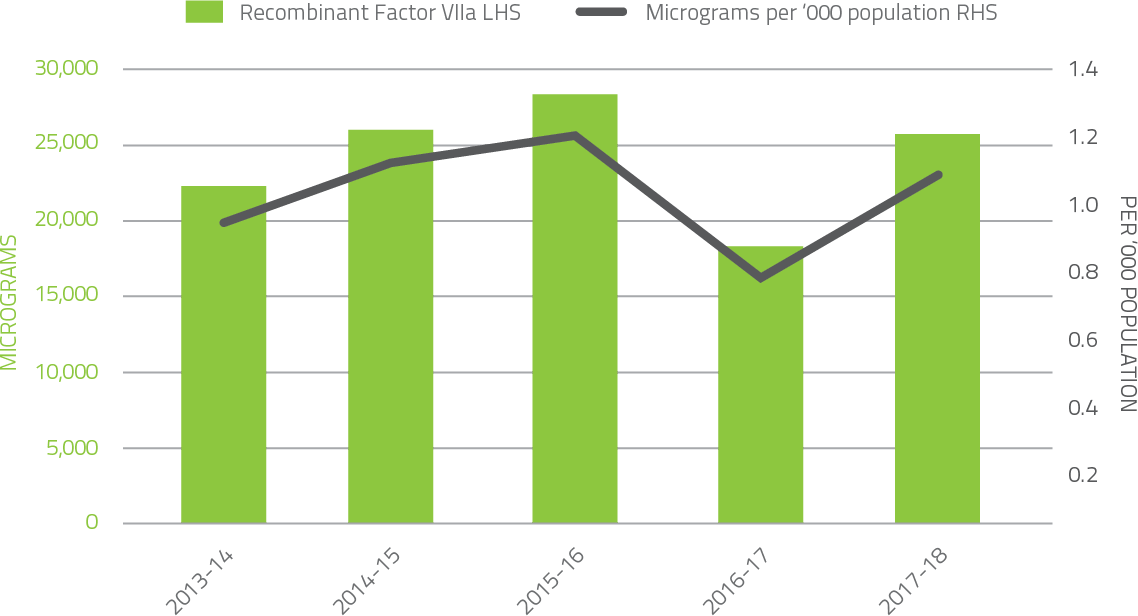
FIGURE 2.8 Issues of Factor VIIa products 2013-14 to 2017-18 per '000 population
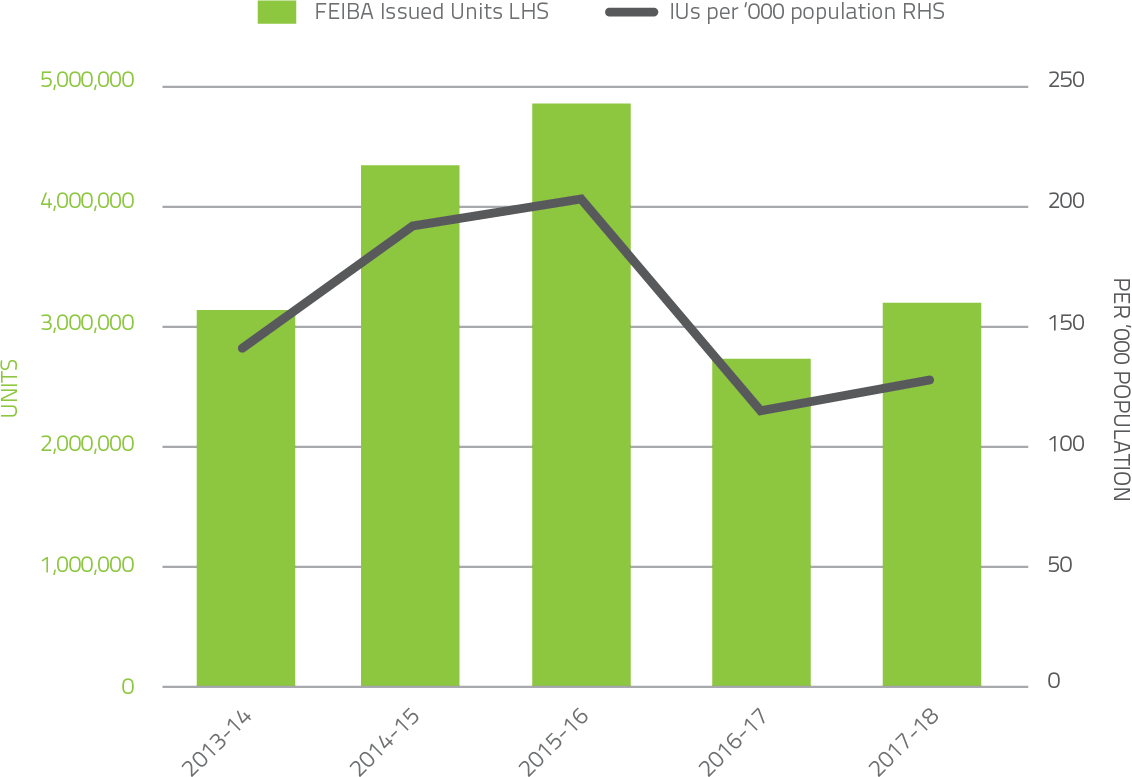
FIGURE 2.9 Issues of FEIBA, 2013-14 to 2017-18 per '000 population
Issues of immunoglobulin (Ig)
As shown below demand for Ig continues to grow at a consistent annual rate of more than 10 per cent.
2012-13 2013-14 2014-15 2015-16 2016-17 2017-18 10.7%
11.0%
10.2%
12.4%
11.2%
10.6%
In 2017-18, a total of 6.13 million grams of Ig was issued, representing a cost of $582.3 million nationally (including the cost of plasma collections). Of this amount, 52.6 per cent was Ig produced in Australia and 47.4 per cent was imported. Figure 2.10 shows the total growth of Ig of approximately 11 per cent per year and the relative proportion of imported Ig compared to domestic Ig.
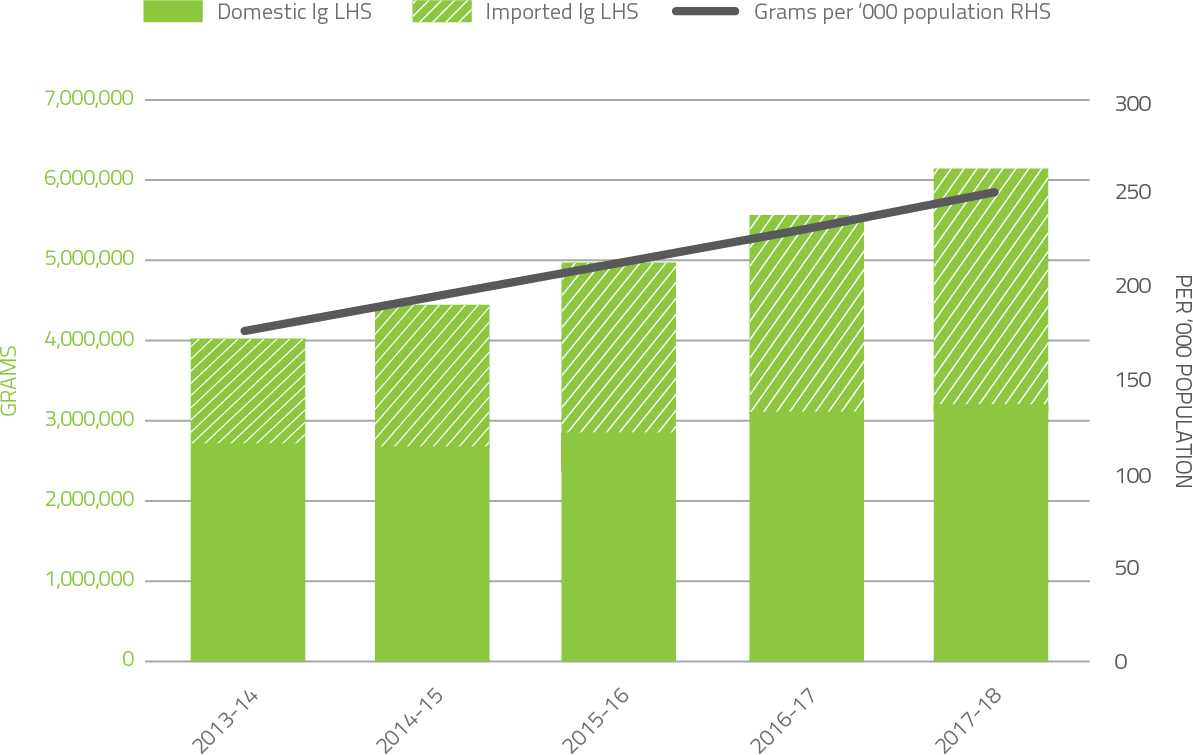
FIGURE 2.10 Issues of Ig products, 2013-14 to 2017-18 per '000 population
Contract Management
Maintaining security of supply requires the NBA to manage contracts with suppliers of blood and blood products. Contracts are developed in accordance with the Commonwealth Procurement Rules, and managed in accordance with Best Practice Guidance for contract management, including the guideline from the Australian National Audit Office (ANAO) on Developing and Managing Contracts.
In 2017-18, the NBA managed 14 blood and blood product supply contracts and arrangements.
The contracts managed by the NBA included:
- fresh blood product procurement - Australia's fresh blood component requirements through the Deed of Agreement with the Australian Red Cross Society
- plasma and recombinant product procurement - Australia's plasma product and recombinant product requirements through:
- the National Fractionation Agreement for Australia (NaFAA)
- contracts for the provision of imported IVIg, imported recombinant factors VIIa, VIII, IX, and XIII, and other imported plasma and recombinant products
- red cell diagnostic reagent products.
Deed of Agreement with the Australian Red Cross Society
The Deed of Agreement with the Australian Red Cross Society for the supply of fresh blood products by the Blood Service is one of the most important contracts managed by the NBA. The Blood Service is the sole supplier of fresh blood products. The provision of fresh blood products under the Deed is an essential clinical service that saves lives every day. The NBA has an ongoing program with the Blood Service to improve contract performance and accountability under the Deed. The NBA implemented a new nine year Deed of Agreement with the Australian Red Cross Society on 1 July 2016 and included a three year funding and service agreement.
Funding provided to the Blood Service is based on an Output Based Funding Model (OBFM) arrangement. Funding in 2017-18 was $620.7 million, an increase of $38.3 million over the $582.4 million provided in 2016–17.
Performance
The performance of the Blood Service is a key element in meeting blood sector objectives. Governments expect the Blood Service to deliver effective services at optimum value for money. Governments outline their expectations of the Blood Service in relation to performance through the Deed of Agreement and the Blood Service Statement of Expectations. Blood Service performance against selected indicators is outlined in Table 2.3.
Pilot plasma donor centres
Townsville
On 27 September 2017 history was made in Townsville when Australia's and the southern hemisphere's first pilot plasma donor centre opened its doors.
Located at the same site as Townsville's previous blood donor centre, the fully repurposed and refurbished centre is part of a two-year pilot project, funded by all governments. Designed to trial the first innovation in plasma collection and donor care, the site was selected because it was already the national leader in plasma donation.
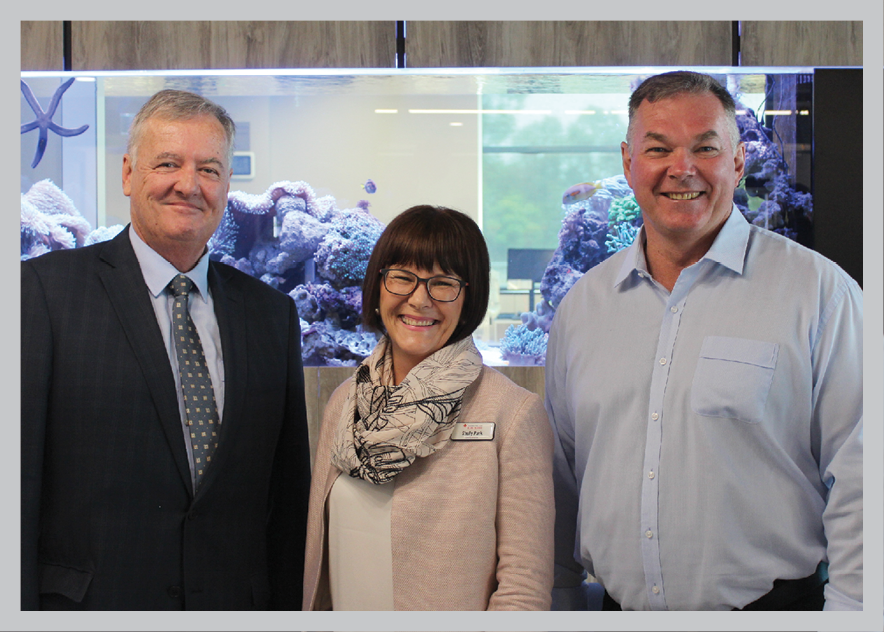
L to R: The NBA's Chief Executive, Mr John Cahill, the Blood Service Chief Executive, Ms Shelly Park and the Member for Townsville, Mr Scott Stewart MP, opening the Townsville pilot plasma donor centre.
Canberra
On 5 June 2018 Senator, the Hon Bridget McKenzie, Minister for Sport, Rural Health and Rural Communications, opened Australia's second pilot plasma donor centre, the new $3.3 million Civic plasma donor centre in Canberra.
Canberra was selected as a site to trial simultaneous operation of a mixed collection facility and a plasma only facility in the same city. Canberra also has a high number of blood donors who are government employees, and receptive to participating.
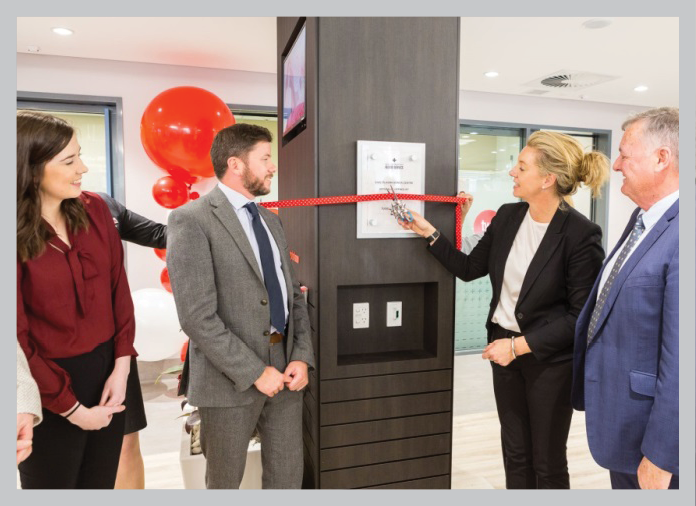
L to R: Ms Hayley Teasdale, a Canberra neuroscientist and regular recipient of plasma based products, Mr Stuart Chesneau, Executive Director of the Blood Service's Innovation and Commercial Strategy Division, Senator, the Hon Bridget McKenzie cutting the ribbon with the NBA's Chief Executive, Mr John Cahill.
As a nation, Australia currently needs more than 25,000 blood donations every week. An average of more than 3,500 donations every day.
Blood and plasma donations are vital to give people quality of life – and in some cases, to give them a second chance at life. It's not only people who are undergoing surgery or who have had major accidents who need blood products.
Plasma is the most versatile component of human blood. It forms the basis of eighteen life-changing therapeutic products used for the treatment of bleeding disorders, immune system disorders, burns and many other conditions.
The pilot plasma donor centres incorporate new technologies and procedures to make the plasma collection process more effective and efficient, and to make the donor experience more pleasant and convenient.
TABLE 2.3 Blood Service: selected key performance indicators, 2017-18
DomainIndicator2016-17 result2017-18 Blood Service target2017-18 result*Donor management
First time donors
Whole Blood
95,970
91,4001
82,533
Apheresis Plasma
45,142
46,6431
52,333
Supply chain management
Number of days within inventory bands
357
365
365
Red cell yield (proportion of collections covered to supply)
91.3%
91.5%
91.7%
Age of red cells at issue (days)
6.94
<8.0
7.7
Order fulfilment red cells
98.4%
>98.0%
98.6%
Quality and level
of serviceHealth provider satisfaction with Blood Service (mean score out of 10)
9.1
8.9
9.2
Finance
Main operating program financial result
$27.3M surplus
$34.5M
$45.2M surplus
* As measured by the Blood Service as at August 2018.
1 First time apheresis plasma donor target includes a combination of donors that converted from previously donating whole blood, and new donors as a result of change in 2017-18 that enabled donors to donate plasma as their first donation.
Implementing improvements to current arrangements
There were a number of initiatives completed as part of the Deed of Agreement with the Blood Service including the following:
- Review of the Output Based Funding Model (OBFM) and capital programs undertaken by an independent third party consultant, the outcomes to inform the development of the next funding cycle
- Official opening of the refurbished Perth Processing Centre in December 2017
- Improvements in supply performance and efficiencies, with the Blood Service achieving a surplus of approximately $39.7 million to be returned to governments
- New Funding and Administrative Agreement (FAA) negotiated and agreed with Queensland Health for the provision of supply planning services at health and hospital service level
- Jurisdictional Blood Committee (JBC) approval for the Australian Defence Force (ADF) use of frozen blood components under the national blood arrangements, is fully funded by the ADF
- JBC approval for two new Blood Service activities:
- Non-Invasive Prenatal Analysis (NIPA) for high risk pregnancies for a period of two years and pending broader consideration of issues arising from potential Medical Services Advisory Committee (MSAC) consideration
- an iron education program for female blood donors aged 18-45 years.
The NBA and Blood Service data and ICT systems security arrangements continued to be reinforced in response to the Blood Service's data breach incident in 2016. The Blood Service has actioned most recommendations arising from various reviews of the incident. The NBA will continue to monitor implementation arrangements in 2018-19.
New technologies and processes were trialled by the Blood Service to improve the efficiency of plasma collection and reduce costs through the establishment of two pilot plasma only donor collection centres in Townsville and Canberra. The refurbished Townsville centre opened in September 2017, and the new Canberra facility opened in April 2018.
The first part of the pilot has been successfully completed, with both centres now open and operational. A post implementation review will be conducted once the first 11,000 donations are analysed. The next steps for the project will look at increasing volume planning for the Canberra site and a review of technology enhancements.
Blood Service research and development
The Blood Service and the NBA negotiated a new Research and Development Framework under the new Deed of Agreement arrangements effective from 1 July 2016. In 2017-18, through funding specified in the Deed of Agreement, the Blood Service received grant funding of approximately $9.4 million for its research and development program in the following five strategic research themes:
- donor behaviour
- donor health and wellbeing
- product development and storage
- product safety
- product usage.
The Blood Service research and development business outcomes were on track with most of the research projects completed in 2017-18 being translated into changed business practices or learnings.
This year, research and development at the Blood Service remained focused on understanding what motivates current and future donors, the safety and quality of blood components, development of sensitive, specific and cost-effective testing capabilities, enhancement of knowledge of transfusible blood components and their interactions with patients, and improvement of practice. A strong emphasis is placed on translational research through close interaction between research and development and operational arms of the business through all stages of a research project's life cycle.
National Fractionation Agreement for Australia (NaFAA)
Most plasma derived products used in Australia are manufactured by CSL Behring (Australia) Pty Ltd under the NaFAA from plasma collected by the Blood Service. CSL Behring (Australia) Pty Ltd is the sole manufacturer of plasma derived blood products in Australia and the NBA is responsible for negotiating and managing the NaFAA.
The NaFAA came into force on 1 January 2018 and will continue until 31 December 2026, subject to a review in 2022. The NaFAA replaced the CSL Australian Fractionation Agreement (CAFA) which expired on 31 December 2017.
In 2017-18, 675 tonnes of Australian plasma was pooled for fractionation under the agreements, and expenditure totalled $273.6 million.
New National Fractionation Agreement for Australia
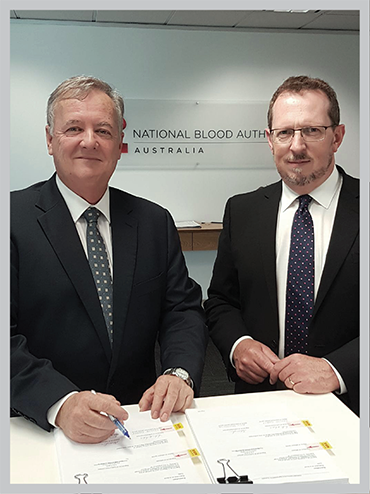
LtoR: NBA's Mr John Cahill, Chief Executive and Mr Michael Stone, Deputy General Manager and General Counsel signing the new contract with CSL Behring Australia.
On 6 December 2017, the NBA executed a new national contract with CSL Behring Australia Pty Ltd (CSL Behring) for the manufacture and supply of fractionated blood plasma products.
The National Fractionation Agreement for Australia (NaFAA) replaced the previous agreement with CSL Behring which expired on 31 December 2017.
The new Agreement commenced on 1 January 2018 and continues until 31 December 2026 (nine years), subject to a review in 2022.
The new contract will assure the provision of a safe, secure and affordable supply of plasma products to the Australian community. The contract is valued at $3.4 billion and delivers savings against the existing contract of more than $200 million as a result of improved manufacturing processes and efficiencies.
Plasma products are often life-saving and play a vital role in helping people fight infections, recover from serious injury and maintain quality of life.
CSL Behring will manufacture the comprehensive range of products from Australian plasma provided by the Australian Red Cross Blood Service from voluntary blood donations. The products are manufactured at CSL Behring's facilities at Broadmeadows in Victoria.
Performance
The 2017-18 performance by CSL Behring (Australia) Pty Ltd against the CAFA and NaFAA key performance indicators (KPIs) is shown in Table 2.4. Sufficient supply of all products was maintained at all times. The performance of CSL Behring (Australia) Pty Ltd was within defined tolerances for each of the KPIs where known issues were beyond the control of CSL Behring (Australia) Pty Ltd.
TABLE 2.4 CSL Behring (Australia) Pty Ltd's performance under the CAFA and NaFAA, 2017-18
Description of performance
measureResults 2017-18Q1Q2Q3Q4AnnualKPI1
Plasma stewardship
Achieved
Achieved
Achieved
Achieved
Achieved
KPI2
Production yield
IVIg
4.723 g/kg
4.770 g/kg
4.645* g/kg
4.714*g/kg
4.682*g/kg
SCIg
N/A
N/A
4.658 g/kg
N/A
4.658 g/kg
KPI3
Management of required inventory levels
Minimum starting plasma inventory
Not active in 2017-18
Products in CSL Behring (Australia) Pty Ltd inventory
100%
100%
100%
100%
100%
Products in CSL Behring (Australia) Pty Ltd reserve
100%
100%
100%
100%
100%
KPI4
Fulfilment of orders
Orders by distributor (Blood Service) and non-distributor
100%
100%
97%
99%
99%
KPI5
Shelf life of national reserve products
100%
96%
100%
100%
99%
Note: Values of 90 per cent or more are considered to be achieved.
*Subject to confirmation
Imported Immunoglobulin (Ig)
Ig is imported to meet a shortfall in domestic Ig production against clinical demand in Australia. In addition to supply under the national blood arrangements, the NBA also supports the purchase of small amounts of obtained imported Ig when necessary through direct orders by individual jurisdictions.
Two contracts are in place for the supply of imported Ig under the national blood arrangements. The contracts commenced in September 2015 and currently expire on 31 December 2018. The suppliers are CSL Behring (Australia) Pty Ltd and Grifols Australia Pty Ltd. In 2017-18, the NBA expended $133.58 million for both contracts.
Performance
The 2017-18 performance of both suppliers against the contractual KPIs is shown in Table 2.5. Sufficient supply of products was maintained to meet demand during the year and was not adversely affected by transient or administrative KPI deviations.
TABLE 2.5 Imported IVIg: Key performance indicators, by supplier, 2017-18
KPIPerformanceCSL Behring (Australia) Pty LtdGrifols Australia Pty LtdKPI1
In-country reserve
Achieved
Achieved
KPI2
Shelf life on
products deliveredAchieved
Not achieved*
KPI3
Delivery performance
Achieved
Achieved
KPI4
Reporting accuracy and timeliness
Achieved
Achieved
In some instances, performance deviated from contracted requirements at some periods during the year and was managed by the NBA.
*This contract deviation did not adversely impact overall supply during the year.
Imported plasma derived and recombinant blood products
The NBA has contracts with suppliers for the importation of selected plasma derived and recombinant blood products to augment domestic supply where these products are not produced in Australia or domestic production cannot meet demand.
In 2017-18, the NBA managed supply contracts for imported plasma and recombinant products with the following five companies:
- Bioverativ Australia Pty Ltd
- CSL Behring (Australia) Pty Ltd
- Novo Nordisk Pharmaceuticals Pty Ltd
- Pfizer Australia Pty Limited
- Shire Australia Pty Limited
Expenditure on the above contracts in 2017-18 amounted to $136.74 million.
Performance
The 2017-18 performance of suppliers of imported plasma and recombinant blood products for each performance measure is shown in Table 2.6. All suppliers satisfactorily met required performance levels.
TABLE 2.6 Imported plasma and recombinant blood products: key performance indicators, by supplier, 2017-18KPIPerformance measureBioverative Australia
Pty Ltd (Alprolix, Eloctate)CSL Behring
(Australia)
Pty Ltd
(Rhophylac, RiaSTAP,
Fibrogammin, Berinert)CSL Behring
(Australia) Pty Ltd
(Factor XI Concentrate)Novo Nordisk
Pharma-ceuticals Pty Ltd
(NovoSeven, NovoThirteen)Pfizer
Australia Pty Ltd (Xyntha, BeneFIX)Shire Australia Pty Limited (FEIBA, Ceprotin)Shire Australia Pty Limited (Advate, Rixubis, Adynovate)KPI1
In-country reserve Product Inventory
Achieved
Achieved
Achieved
Achieved
Achieved
Achieved
Achieved
KPI2
Shelf life on products delivered
Achieved
Achieved
Achieved
Achieved
Achieved
Achieved
Achieved
KPI3
Delivery performance
Achieved
Achieved
Achieved
Achieved
Achieved
Achieved
Achieved
KPI4
Reporting accuracy and timeliness
Achieved
Achieved
Achieved
Achieved
Achieved
Achieved
Achieved
In one instance, the performance of the relevant supplier deviated from contracted requirements at some periods during the year and was managed by the NBA.
Red cell diagnostic reagent products
Red cell diagnostic reagents are used for testing to establish the blood group of human red cells, detect red cell antibodies and to control, standardise and validate routine haematology tests.
The NBA has established a standing offer arrangement with the following four suppliers for the period 1 July 2016 to 30 June 2019:
- Bio-RAD Laboratories Pty Ltd
- Grifols Australia
- Ortho-Clinical Diagnostics (Johnson & Johnson Medical Pty Ltd)
- Immulab Pty Ltd.
The standing offer lists more than 100 red cell diagnostic products, which are used in laboratory tests known as blood typing and cross matching. These tests ensure that when a person needs a blood transfusion, they receive blood that is compatible with their own.
Expenditure on diagnostic reagent supply is capped at $4.85 million per year. The NBA administers the cap for all jurisdictions and suppliers.
Potential future arrangements for imported plasma and recombinant products
During the period January to April 2017, the NBA undertook extensive consultations with potential suppliers and clinical and patient stakeholders to inform consideration of future procurement arrangements for clotting factor products.
Following these consultations, Australian governments asked the NBA to progress work in two key areas in relation to the potential supply of extended half-life (EHL) clotting factor products under the national blood arrangements. These two key areas are:
- A health technology assessment - The NBA has initiated a coordinated assessment of EHL products incorporating a national health technology assessment process through the Medical Services Advisory Committee. Facilitated by the NBA, the assessment has engaged directly with potential suppliers and other stakeholders to accelerate the formal assessment of EHL products. This process is well advanced and information can be obtained at: http://www.msac.gov.au/internet/msac/publishing.nsf/Content/1511-public
- Limited interim supply arrangements – Pending the outcomes of the coordinated assessment, the NBA has worked with Shire Australia Pty Limited (Shire) and Bioverativ Australia (Bioverativ) to implement limited interim arrangements for supply of EHL products, based on proposals received from these two suppliers. These programs provide some product access to benefit prioritised haemophilia patients while the detailed evidence-based assessment of EHLs is undertaken. The programs also enable the collection of real world supply management information in the Australian context to assist with the design and planning of future procurement and evaluation processes and generally support sound and well informed policy and administrative decision making. The arrangements established with each supplier ensures that these programs have no additional cost to the NBA budget.
Based on the proposals from the two suppliers, the limited interim supply arrangements enable approximately 200 patients to access EHL products under nationally funded arrangements. Of this number:
- around sixty haemophilia B patients have access to the Bioverativ product Alprolix
- around 140 haemophilia A patients have access to the Shire product Adynovate (around 100 patients) or the Bioverativ product Eloctate (around forty patients)
- in each case the numbers of patients include patients currently participating in supplier extension programs following clinical trials.
Further information on the limited interim supply arrangements can be found at:
https://www.blood.gov.au/limited-interim-arrangements-extended-half-life-clotting-factor-products
Work on both the health technology assessment and the limited interim supply arrangement for EHL products is continuing into the 2018-19 financial year.
